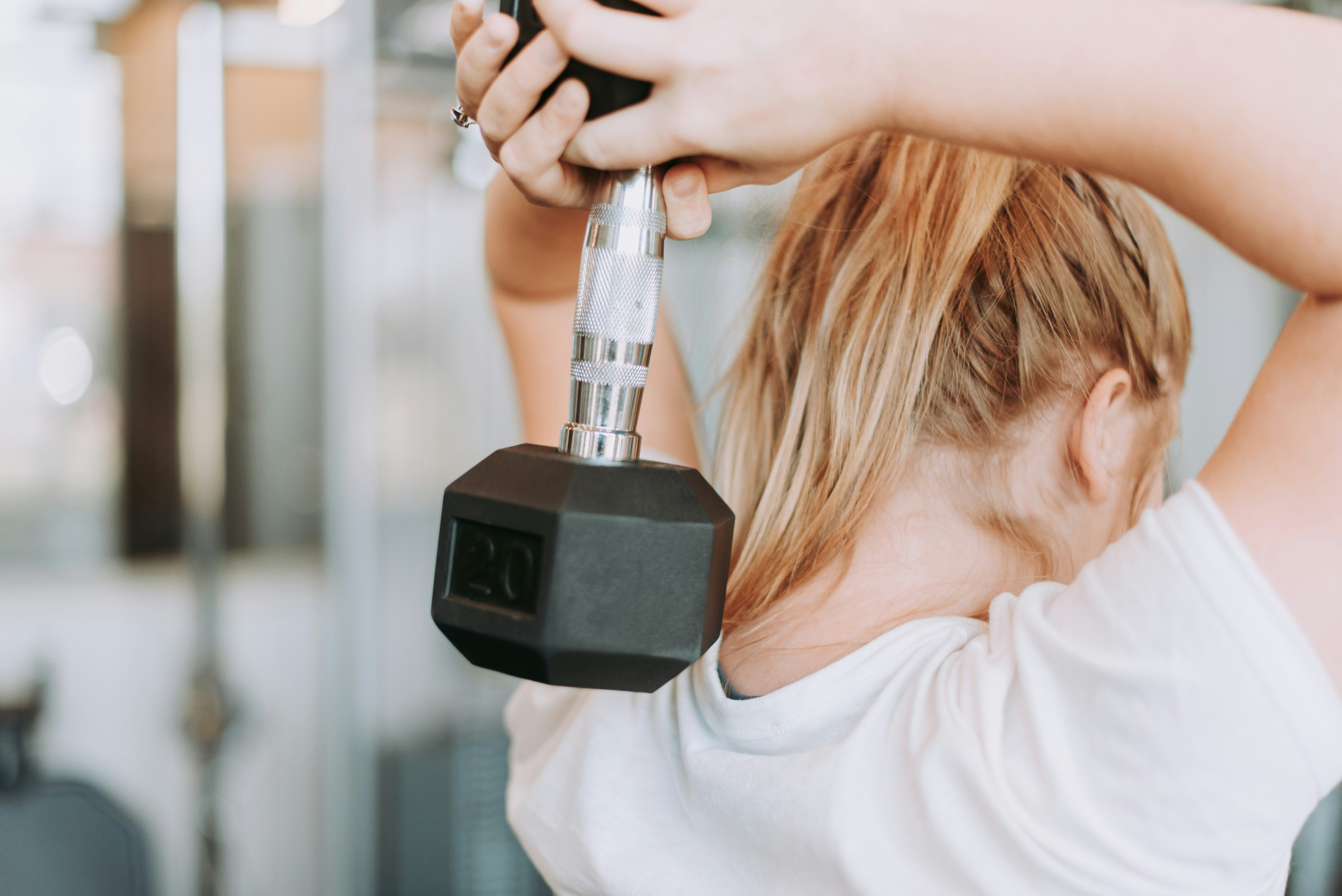The Metabolic Mayhem of Middle Age
11 Sep 2024

The Metabolic Mayhem of Middle Age.
..........Otherwise known as 'Help!! My jeans no longer fit'.
‘Middle-age spread’, ‘spare-tyre’, ‘love handles’ – we’re all familiar with ways to describe the fat gain around our middle and the tightening of waistbands that is seemingly inevitable from a certain age. Even if you were one of the lucky ones who was able to eat anything in your younger days, there’s every chance things started to change after the age of forty.
You might be surprised to learn that, despite what we may think, ‘middle-age spread’ is not inevitable. So what is it? Why does it happen? And, most importantly, what can we do about it?
Hormones that can go haywire
The longer we live (which I think we can all agree is a good thing) the more time there is for our hormones to go haywire. Disrupted hormones can lead to excess hunger, food cravings, reduced satiety, and blood sugar imbalances which can prompt our body to stubbornly store fat, especially round the belly (exactly where we don’t want it!).
Insulin is the hormone produced by the pancreas in response to a meal/food containing sugar/starch. Insulin is our ‘fat storage’ hormone – it directs the body to burn glucose for energy and converts any excess sugar/starch that is eaten into body fat.
Insulin resistance (the need for greater amounts of insulin to deal with the same amount of sugar/starch) tends to increase with age. For this reason, I often hear clients remark that they have not changed what they eat, but the pounds are piling on. Increasing insulin resistance is one hormonal reason why the diet that once suited us, and seemed healthy at the time, may no longer serve us.
Cortisol is our chief stress hormone that tends to also increase as we age and higher cortisol levels correlate with greater storage of belly fat. Levels of cortisol are influenced by the life stresses we endure, blood sugar dysregulation, and increasing inflammation in the body that occurs with ageing, known as ‘inflammaging’.
Decreasing muscle mass
Loss of muscle mass is a key reason why we become more insulin resistant with age. Lean skeletal muscle acts a huge sponge, soaking up sugar/starch from food. This muscle tissue is also a huge engine, burning high amounts of energy from food, even when we are at rest or asleep. As we lose muscle mass our metabolism reduces and we have less ability to use up the sugar/starch from our meals and snacks. This increases insulin, insulin resistance and causes us to store more body fat.
Any combination of insulin resistance, elevated cortisol, and decreased muscle mass is a recipe for poor metabolic health. Increasing body fat, particularly the higher-risk abdominal fat, is an early warning sign from your body to take action. Poor metabolic health increases our risk of developing high blood pressure, Type 2 Diabetes, and cardiovascular disease as we age.

Help! This is happening to me…..What can I do?
Fortunately, there is a recipe for success that I use with my clients to reverse fat gain and improve body composition that I will share with you –
Nutrient Dense Food + Movement + Mindset Change
True, sustainable change requires a combination all three of these components. So let’s go through each in turn.
Nutrient dense food
Buy whole, minimally processed real food in its natural state, to the best quality you can afford. Choose foods that are made in nature not in a factory. There are 3 macronutrients in foods – Protein, Fat and carbohydrates. Quality matters for all three.
Quality high-protein foods include meat, fish, eggs, tofu, tempeh, some dairy, beans and pulses. Avoid highly processed meats/ meat products. Good quality burgers and sausages are fine if you look for high meat % and minimal added ingredients – visiting your local butcher or farm shop is a good place to start.
Quality fats include extra virgin olive oil, ghee, butter, avocado and avocado oil, raw nuts and seeds, tahini paste, walnut oil. Choose oils in dark glass bottles and avoid fats packaged in plastic. Processed seed oils (rapeseed/sunflower/vegetable oils) have been shown in some studies to be pro-inflammatory and so are best avoided.
Quality carbohydrates include the complete array of colourful vegetables available, plus minimally processed grains. Again, avoid pre-packaged foods with lots of ingredients that have been highly processed. Raw oats are much healthier than granola! Where you do buy pre-packaged food for convenience try to stick to products that contain no more than 5 ingredients.
Once you start to eat nutrient dense real foods, eat 3 regular meals daily, eat slowly and chew your food really well, you can start listening to your body’s true hunger and satiety signals – begin to eat when you are hungry and stop when you are full. I know it might sound impossible right now, but trust me you’ll get there!
Tip: the inner aisle of the supermarket has nothing for you! Circle around the edges to the meat, fish, veg, and frozen sections. Better still find a local farm shop or supplier of local produce.

Movement
i. Strength training
Strength training is one of the most valuable ways you can spend your time as you age. Unfortunately with muscle it’s true that what you don’t use, you lose. We typically lose about 3% - 5% of muscle mass each decade after age 30, and this increases further to around 8% after the age of 60. Inactive people lose the most!
Doing weighted exercise at home, in a gym, or with a personal trainer (contact Tom @ FitCure for expert advice & training 1-2-1 or small groups) and using the principles of progressive overload to get stronger and do more volume will help retain and build muscle mass to keep your metabolism revved up. Replacing body fat with muscle may not show on the scales as ‘weight loss’ but you will be able to see pleasing changes in body composition and shape, and experience positive changes in the way that your clothes fit and feel. This is about getting stronger and boosting confidence.
ii. Low intensity walking
Around your strength training, the best exercise to engage in consistently is brisk walking. When the body starts to lean down, it can subconsciously become lazy to preserve itself.
Walking is the most underrated exercise for the mind and body because of its low intensity and accessibility. It's also a super tool for de-stressing. Many of my clients have benefitted from forming a consistent daily walking practice. Start with 6k steps a day consistently and build-up if you have the time.
Consistency and small improvements are the most important factors in building muscle and getting fitter.

Mindset change
If you want to be healthier you have to think healthier. It's not enough to just change the body. We need to change our minds too.
Transforming our relationships with food, exercise, and ourselves is how we stay consistent with our health goals and avoid the pitfalls of yo-yo-dieting.
So take a look at your whole lifestyle - your other habits and behaviours – do they help you move the needle towards your health goals, or do they hinder you?
How are your sleep patterns? Do you stay up late doom-scrolling on social media or binge watching tv?
How is your caffeine and alcohol intake? Do you skip breakfast and have 3 large lattes, then finish most days with a large glass (or two) of wine to ‘relax’?
How do you spend time with friends? Is it always for a bottomless brunch or do you meet for hiking or wild swimming?.
We can still indulge from time-to-time, enjoy special occasions with friends and family, but if these are week-in week-out then that’s going to sabotage your health goals, no question.
Start thinking of yourself as a healthy person and putting some boundaries in place to give you the best chance of achieving this. For some of us this prioritisation of our needs can be totally new. Sometimes that means having honest conversations about your goals with those closest to you, and asking for help and support. Start a journal and write down your health goals, followed by your 'why's'. Having a strong 'why' will help to keep you on track as time goes on.
And finally, get professional support and accountability – work with a healthcare practitioner who understands your needs, can help you set realistic goals, and who can be there to support you to achieve them one step at a time.
Work with Me
Whether you’re looking to boost your current wellbeing, you’re struggling with ongoing health challenges, or you've received a troubling diagnosis and you want to go deeper, my one-to-one personalised nutrition and lifestyle programmes can provide you with tailored support. We work step-by-step to resolve the root causes of your health challenges and create your best health so that you can enjoy life to the fullest. And, with experience of working closely with GPs in the NHS I can provide support to help you navigate those conversations and advocate for yourself.
Click here to book your free 30-minute, no-obligation, chat with me to review your health goals and discuss how I can help.